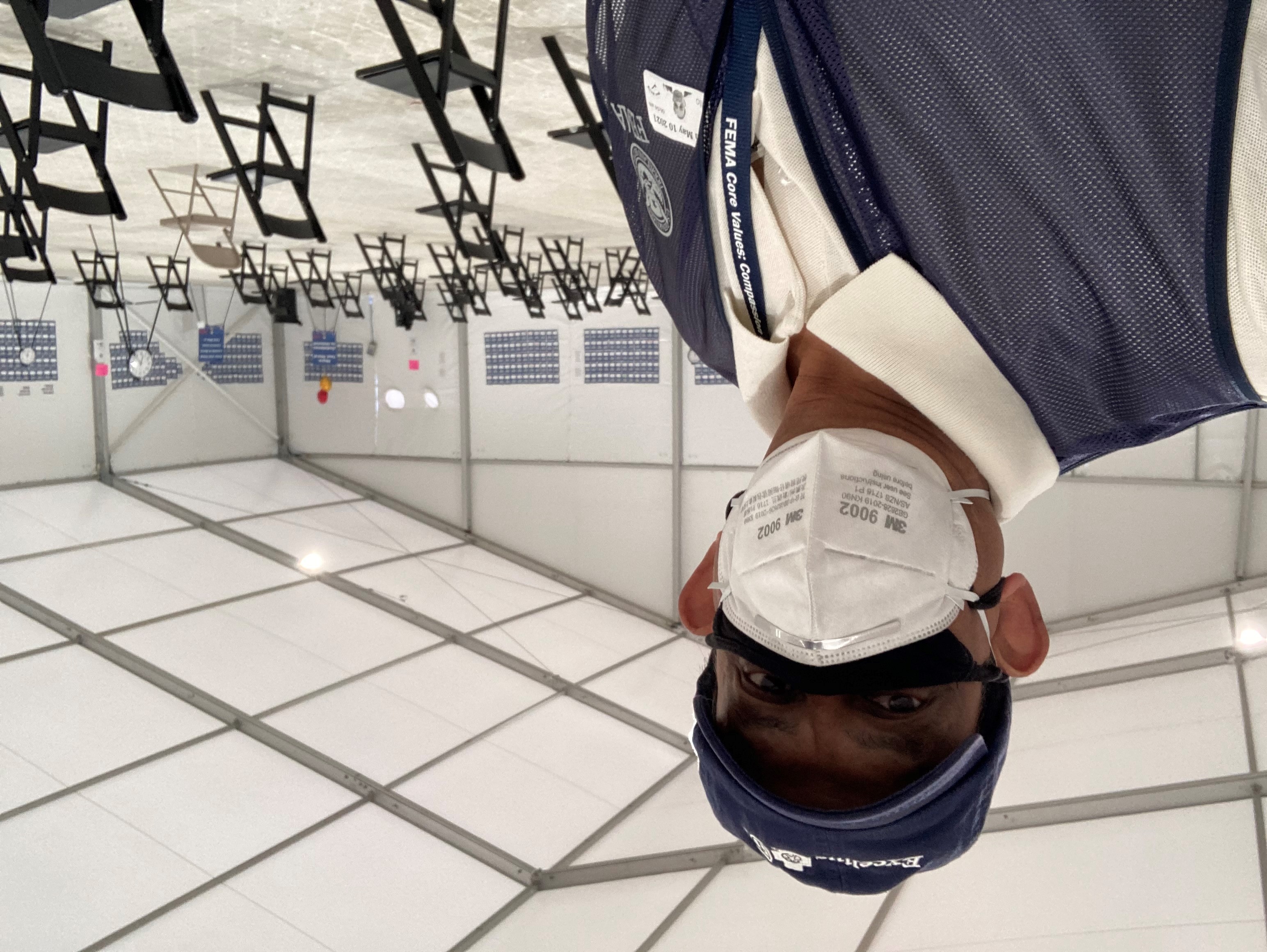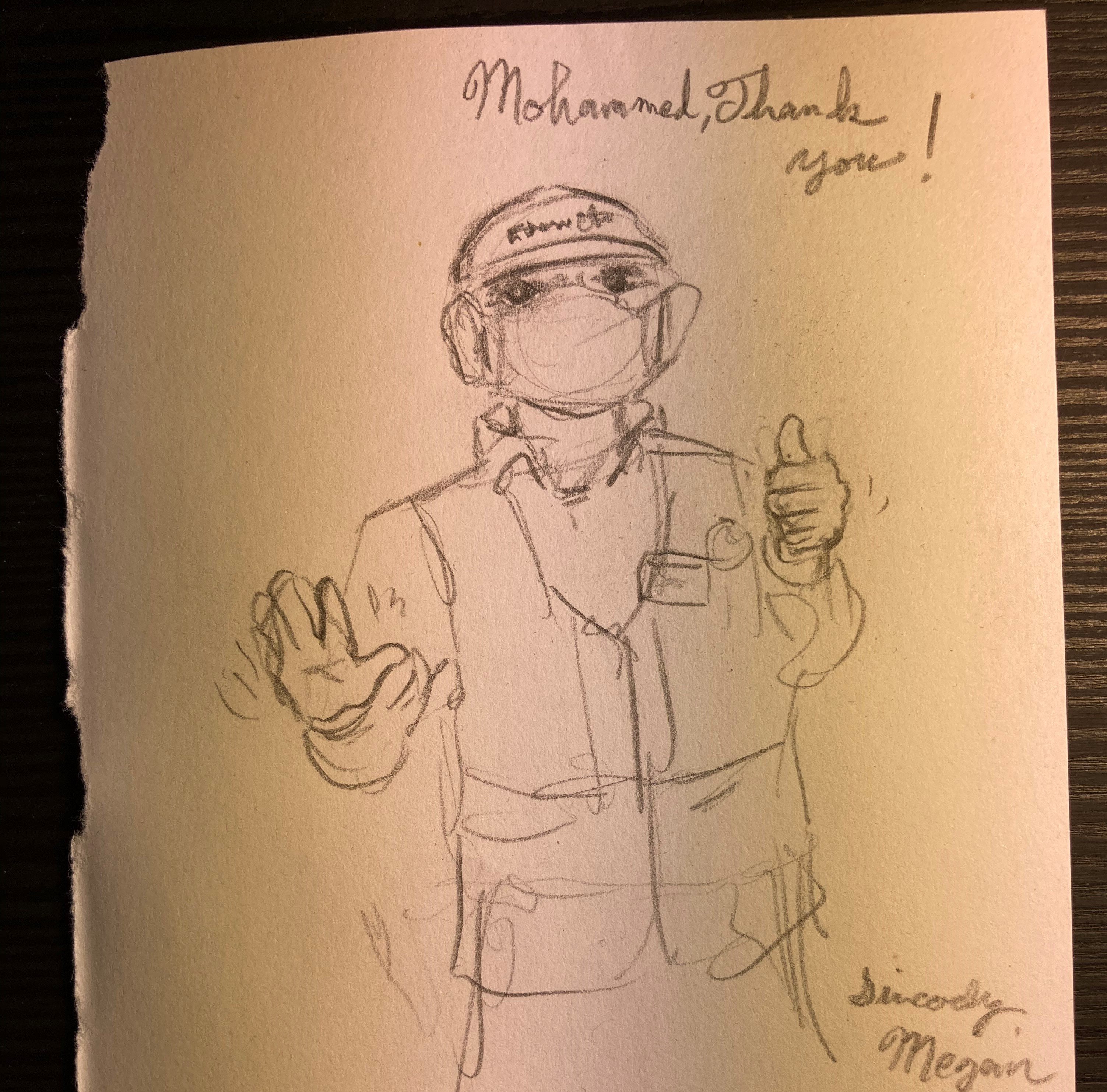
Mohammed Billah was working as an environmental engineer for the Environmental Protection Agency when hurricanes Harvey, Irma and Maria made landfall in 2017. He decided to lend his talents to hurricane response efforts by joining the Surge Capacity Force. The Surge Capacity Force Program allows FEMA to call on the talents and efforts of federal employees — like Billah — from various agencies to help during times of disaster.
Billah deployed again in 2021 to help support a federally supported vaccination center in Greenbelt, Maryland. He says that he was motivated to join the Surge Capacity Force as a way to repay his debt to society.
His journey began years ago in the streets of Los Angeles, where he found himself experiencing the personal disaster of homelessness at a young age.
“While on the other end of charity,” said Billah. “Someone grabbed my hand, picked me up, and offered me a job in his grocery store.”
That simple act, and the relationship of trust that developed, started the process that led him to earn a degree in environmental management — and later, a Master of Business Administration.
Billah feels we all belong and are connected to the environment and that our actions have tangible, direct impacts.
“Working for the EPA gives me the most effective platform to serve my country,” he said.
He added that working for the EPA means he is protecting the earth’s environment, and as a result, the people in it.
He also says that volunteering for the Surge Capacity Force program and EPA’s Emergency Response Corps program provides regular opportunities to pay dividends on the kindnesses shown to him so many years before. Mo has volunteered for every opportunity offered him since the Sept. 11, 2001 terrorist attacks in New York City.
One of Mo’s favorite aspects of volunteering and supporting disasters is connecting with people.
He recalls deploying in 2017 to the FEMA Disaster Recovery Center, where the center’s manager Cheryl made the long workdays fun. Despite a lack of electricity and running water, Cheryl encouraged the team with bottles of water and positive words, reminding them that “tough times never last, but tough people do!”
When Cheryl had to leave due to a family emergency, Mo appreciated how her replacement Reginald equally supported the team by making sure they took breaks and deep breaths on a regular basis.
In his most recent deployment to a community vaccination center in Greenbelt, Maryland — a place local to where he normally works — Billah and his counterparts served as greeters, screeners and observers to members of his own community. In these roles, he and his team ensured vaccine seekers had their paperwork, found the correct lines, received language or other assistance when needed, and moved safely through each step of the vaccination process.
Billah discovered that people’s use of cell phones provided helpful clues about how they were faring after being vaccinated. Most people, if not chatting with someone, passed the recommended waiting period by looking at their phones, so hearing one drop was a quick indicator that someone might not be well.
He credits a past employer, the New York City Fire Department, with the situational awareness skills he used to succeed in this assignment.
Billah is now serving as the national coordinator for the EPA’s Combined Sewer Overflow program. Reflecting on challenges he has faced over the years due to stereotypes about his name or appearance, Billah credits his positive outlook and success to excellent supervisors who encouraged him in the face of disappointment and frustration.
Additionally, he says that one of his biggest takeaway from the national crises in which he has served is that —from the highest to lowest levels — we can all do great things when we look past our differences and all stand together.
Billah is still in touch with many of the people he has met along the way. He says he takes time to listen to others’ stories and help them discover their innermost goals and passions, just like someone did for him so many years ago. He focuses on giving — whether it’s a sandwich to a hungry passerby in Puerto Rico, a spare $10 to help someone buy lunch or a bit of timely advice to illuminate the life path of a fellow coworker or volunteer.
“We may not solve the whole puzzle ourselves,” Billah said. “But we can each offer a piece. Every single action counts.”
Throughout his career, he says that one of his most memorable moments was when a vaccine recipient thanked him with a small piece of paper containing a caricature of himself. While he believes that he will never finish paying his debt to society, Mo said, “A little thank you goes a long way, and it’s nice to know I could touch a heart.”
To learn more about deploying for FEMA as a federal employee, visit the Surge Capacity Force page.



